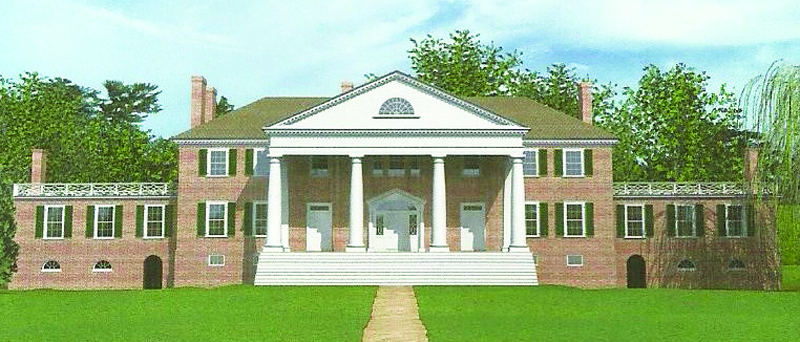Presidential Sites: Montpelier went through many changes after the Madisons
Published 8:56 am Thursday, January 6, 2022
|
Getting your Trinity Audio player ready...
|
By Betty Etchison West
For the Enterprise
Montpelier, the home of the fourth President of the United States, James Madison, is only 28.9 miles from the home of Thomas Jefferson; so with a bit of planning, a person can visit both in one day. To go from Monticello to Montpelier you travel on Hwy. 231 South.
The story of Montpelier is interesting and is quite different from that of any of the other presidential homes.
Dolley Payne, who was born near what is now Greensboro, North Carolina, was married when she was quite young to a young lawyer, John Todd Jr. The young couple had two sons.
About three years later, Dolley’s husband, John, and one of her sons died in a yellow fever epidemic. Dolley and her son, Payne, were left to fend for themselves.
Dolley went to work at her mother’s boarding house in Philadelphia. It was there that she met James Madison. She was introduced to Madison by Aaron Burr. James Madison was older than Dolley and his personality was completely opposite from that of Dolley. James was an introvert and Dolley was an extrovert who liked nothing better than entertaining a large crowd of people. Madison would much prefer carrying on a conversation with one person.
In spite of the differences, James Madison won Dolley Madison’s hand even though she had many suitors. Dolley simply said, “Our hearts understand each other.”
James Madison took his bride to his home, Montpelier, which was located in Orange County, Va. Dolley loved Montpelier, and she and her husband enjoyed every minute they spent there. The only time that they lived elsewhere was when he was involved in affairs of government which included the eight years that he served as President of the United States.
At the end of Mr. Madison’s second term as President, he and his wife moved back to Montpelier where Dolley continued to entertain everyone who came their way. That, in fact, was many people who would stop at the Madison home when they were traveling, and would often stay several days at a time. There were no hotels or motels aat that time so travelers often simply stopped and spent time with people they knew.
Dolley was pleased to have the company, but her husband would just retreat to his study to read and write.
This happy arrangement ended in 1836. That was 19 years after the Madison’s moved back to their plantation. Thus began the sad part of the story for Dolley Madison and for the home that she had enjoyed so much. Dolley’s son, Payne, from her first marriage grew up and was given to riotous living. One definition of riotous in the dictionary is ”to waste or spend recklessly.” That is exactly what Payne did and he often found himself in difficult circumstances. When Payne was in trouble with unpaid debts, etc., James Madison would bail him out without telling his wife, Payne’s mother. This seemed to have lasted throughout much of Payne’s life.
James, who loved Dolley deeply, could not bring himself to reveal the truth to her about her son so he kept paying and remained quiet.
As usual, there came a pay day, and that pay-day came after James Madison died.
Dolley then discovered that James Madison was so deeply in debt that Montpelier had to be sold. That must have broken the heart of the lady who had loved and enjoyed her home so much, but Dolley, always the trooper, sold Montpelier.
She moved back to Washington, the place where she had so many friends. Dolley was almost penniless but her friends did all they could to help her in unobtrusive ways. She was able to move back into her place in society even if it now meant that she wore old dresses and not the latest fashions.
Dolley Madison, one of America’s most admired first ladies, died in 1849. She was buried in Washington, but her body was finally exhumed and buried in the Madison Family Cemetery at Montpelier where her husband is also buried.
Montpelier had a number of owners before it was bought by William du Pont Jr. in 1901, 65 years after the death of James Madison.
The book, Cabins, Cottages & Mansions by Nancy and Christopher Benbow says: “Under du Pont’s ownership, the mansion and surrounding property was drastically reshaped. Mr. du Pont enlarged the mansion still further and added barns, greenhouses, a saw mill, a blacksmith shop, and staff houses … a train station, and general store.”
Mr. du Pont added huge wings to each side of the house and covered all of the brick with stucco, which he painted an odd color—actually the addition resulted in the house having 55 rooms.
After William du Pont’s death, his daughter, Marion DuPont Scott, inherited the property and made other additions—a racetrack, a steeplechase course and stables.
In 1983, Mrs. Scott died and the property was devised to the National Trust for Historical Preservation, which still owns and administers the property. The National Trust has worked hard to return Montpelier to the way it looked when it was owned by James Madison.
The wings which were added have been removed as has the stucco. The exterior of the house now looks how it did in 1836. The present owners have done extensive research to determine exactly how the interior looked when the Madisons were there and now they have completed the restoration so that interior is just like it was when Dolley welcomed visitors.
They have a few pieces of furniture in the house that belonged to James and Dolley Madison but most of the furniture is just similar to the furniture that was there when the Madisons occupied the mansion.
Montpelier is an interesting place to visit if one is interested in history or architecture. Hours are limited so those planning to visit should call 540-672-2728 for information and reservations for a guided tour of the house. The grounds usually open, but a tour of the house is the thing that really makes the visit worthwhile.






